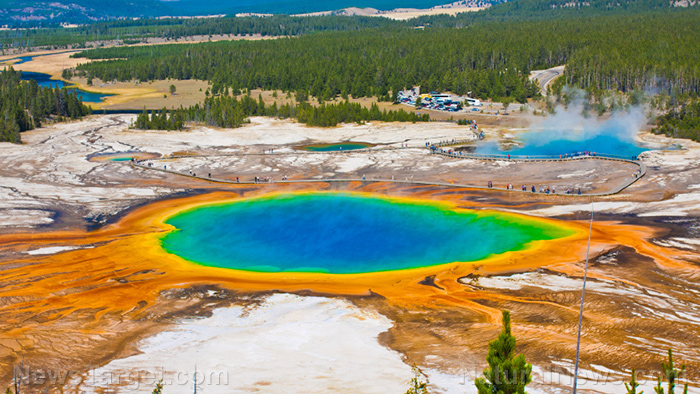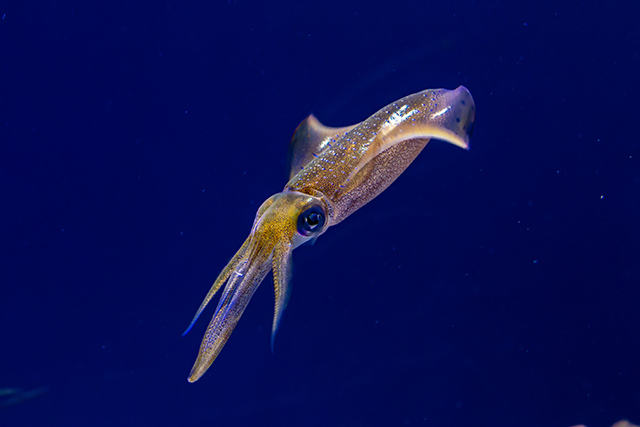“Tree kill zone” in Yellowstone National Park hints at new magma activity below the surface
08/25/2019 / By Edsel Cook

The massive amounts of magma slumbering beneath Yellowstone National Park stir anew. Researchers reported the appearance of a new thermal area in the park that killed off the plants in its vicinity.
The area measured eight acres (3.2 hectares), enough to fit four soccer fields. It first appeared on infrared images taken by Landsat satellites that passed over the park.
In a thermal area, the ground experiences higher temperatures than its surroundings. The increased heat harms the roots of the trees and other vegetation. Eventually, this leads to the death of the plants in the area.
The United States Geological Survey (USGS) believed that the new thermal area in Yellowstone took more than two decades to reach its current size. However, its researchers were only able to confirm its existence in recent times.
In the federal agency’s weekly Caldera Chronicles, the team detailed how they found the Tern Lake thermal area near its namesake bodies of water, the Tern Lake and the West Tern Lake.
Thermal areas are locations that contain one or more geysers, hot springs, and similar geothermal features. There are more than 10,000 individual features scattered throughout Yellowstone National Park. (Related: Scientists speculate that uptick in California earthquakes might trigger Yellowstone supervolcano.)
Researchers confirmed the appearance of a new thermal area in Yellowstone
The USGS organized the thermal features into roughly 120 different thermal areas for convenience. One of these established areas was the Tern Lake Thermal Area, which got its name from the two nearby lakes.
During the past few years, the remote part of the land between the Tern Lake Thermal Area and the West Tern Lake became home to a new thermal area. Researchers first caught wind of the development when they noticed the dearth of trees and plants.
The researchers had a hunch regarding the cause of the treeless zone. To confirm their suspicions, they checked satellite infrared imagery of the region taken from the 1990s to the present time.
The heat-detecting cameras of the satellites showed a brightly glowing patch in the depths of the forest. The images indicated that the ground grew hotter as time progressed.
“Analysis of a Landsat-8 nighttime thermal infrared image acquired in April 2017 revealed an unexpected warm area between West Tern Lake and the previously mapped Tern Lake thermal area,” explained the USGS researchers. “This mysterious patch of bright pixels in the thermal infrared image did not match any previously mapped thermal areas.”
The Yellowstone supervolcano continues to sleep for now
In Landsat photos that dated back to 1994, the space between the Tern Lake thermal area and West Tern Lake displayed a healthy layer of trees and vegetation. During that time, no one bore the slightest suspicion about the upcoming shift in the magma beneath the ground.
Things began to change in 2006. The plants in the affected area died in numbers. Over the years, the tree kill zone grew larger and larger until it reached eight acres in area during 2019.
“The most recent image of the Tern Lake region, from 2017, reveals a large area of dead trees and bright soil, rather like a thermal area,” explained the USGS researchers. “From all these satellite and aerial images, we conclude that a new thermal area has emerged in the past 20 years!”
The USGS researchers claimed that the appearance of the brand new thermal area was par for the course in Yellowstone. The geothermal activity changed fairly frequently in the park.
If the Yellowstone supervolcano erupted, it will devastate most of North America and affect the entire planet. NASA suggests drilling a hole into the slumbering caldera and pumping pressurized water into it to cool it down. But some fear that this might trigger the eruption early.
Sources include:
Tagged Under: breakthrough, discoveries, earth science, geology, magma, natural disaster, Plants, supervolcano, supervolcanoes, Tern Lake, thermal areas, tree kill zone, trees, volcanic activity, volcanic eruption, volcano, volcanoes, Yellowstone National Park, Yellowstone supervolcano
RECENT NEWS & ARTICLES
COPYRIGHT © 2017 DISCOVERIES NEWS


















